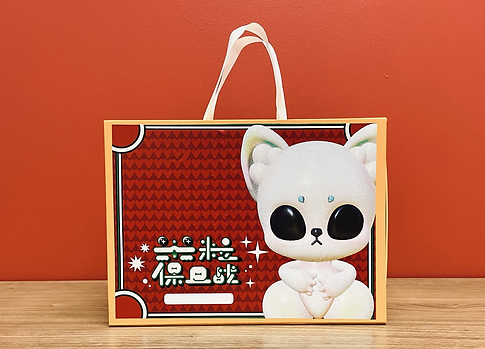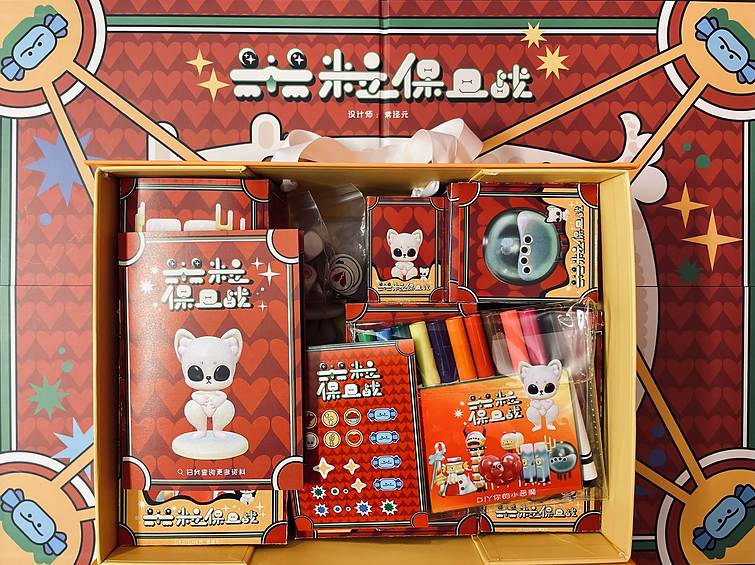RICEY
DEFENCE
This project seeks to address the issue of teacup dogs bred through unnatural means in the Chinese pet market. It aims to educate children under 12, who often express a strong preference for teacup dogs, about the congenital diseases associated with such breeding practices.
The objective is to, to a certain degree, reduce the market demand for teacup dogs at the source.

ROLE
UX Research
Art Direction
game Design
Product Management
TEAM
Yiyuan Chang
CLIENT
IFAW
(Potential)
YEAR
2020.10 -2021.05
7 months)

How dose this project start?
I had a "teacup dog" who broked my heart. Her name was 米粒 (a grain of rice.) I became a regular at pet hospital since I brought her home. Eventually she left me on September 14, 2021, weighting only 350 grams at six month old.
This project is an opportunity for me to talk about her. I interviewed pet doctors and many other teacup dog owners. It turns out that a lot of owners (like me) don't know "teacup-dog" disease before purchase.
This project is named "米粒保卫战"/ "Ricey Defence," to honour the time we spent together, even though it was short.

Ricey is getting an IV drip in the pet incubator.

The first night at home after a week in the pet hospital for Ricey.

Ricey, dressed in new clothes, peacefully sleeping forever.

Ricey is getting an IV drip in the pet incubator.
photography by Yiyuan Chang, 2021
Key Challenge 1:
1. I used to empathise with the user and define the problem. However, in this project I don't know who am I designing for. I need to choose a more suitable design process for this project.
Secondary Research - Issues of Chinese pet Market
I conduct brief market research on Chinese pet market regulations, and teacup dogs' breeding method, and consumers' misinformation towards teacup dogs.
Secondary Research - Customer preference

Then I conduct deeper research to understand the relationship between consumers preference towards special-bred small sized dogs as well as their awareness of these dogs' congenital diseases.




Secondary Research - possible design approach
establishing a public welfare brand / conducting educational campaigns, and so on.















Primary Research - Interview and Survey
Secondary Research Include two moderated interviews of pet doctor and survey of 8 participants. 4 Teacup dog owners (2 males and 2 females,) and 4 teacup dog potential buyer (2 males and 2 females)

user interview schedule

interview checklist

Survey checklist




interview contacted, interview notes
survey contacted, survey notes
Synthesize Result
I identified some patterns from organized data, one of them is that the consumers' teacup dog diseases awareness is inversely proportional to their preference.
the group displaying the strongest preference for teacup dogs is not financially capable adults in the pet market, but rather children around the age of 8.






Key Challenge 2:
How to educating Chinese children around 8 years old about teacup dog congenital disease in a easy and acceptable way?

Solution
How might we design a board game with no request of digital devices, which is about 15 mins each round, can be played on breaks between classes, while all diseases designed as a monster with own features?

Process - Charecter design
Each disease is designed based on appearance and character, and "Ricey" is made to be more vulnerable and lovable to arouse players' desire for protection.
1

Sketch of the main character

Sketch of disease monster

Sketch of disease monster

Sketch of the main character
sketches of monsters
2

3 point of view digital illustration for modeling

3 point of view digital illustration with color for later modeling - front view

3 point of view digital illustration with color for later modeling

3 point of view digital illustration for modeling
3 point of view digital illustration
3

3D model

3D model

3D model

3D model
modeling & rendering.
4

Play card design

Play card design

Play card design

Play card design
playcard design
Process - Game design
Game mechanics: Players are Ricey' defenders, and they need to cooperate against all disease monsters inside of Riceys' body to win the game.
study popular board games' mechanics
Process - Elements design / printing
Design elements & Printing process
Final design- digital
3D monsters

digital game broad
game mechanics digital booklet
game mechanics digital booklet
digital playcards
Final design- photograph

Boardgame Front

Boardgame Back

tokens
booklet
broad map
stickers
DIY set
Boardgame inside

monster package outside

monster package design

use DIY set coloring models

DIY set

Boardgame playing
Final presentation




"
The birth of this work is based on my personal experience, and I flet so lucky to meet many people during the process. Whether it is strangers who leave hundred-words commented for me online, or participants who are willing to share their personal experiences, I feel the charm of design - using visual language to bring together people who have a common experience.
"







































